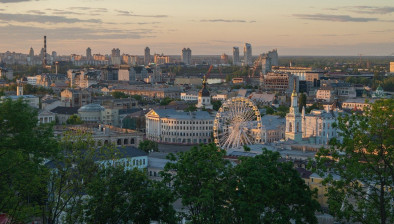Ukraine: Russia’s siege warfare tactics unlawfully killing civilians – new testimony and investigation

The Russian military’s siege warfare tactics in Ukraine, marked by indiscriminate attacks on densely-populated areas, are unlawfully killing civilians in several cities, Amnesty International said today in a new on-the-ground investigation.
For the first time, Amnesty International field investigators in Ukraine have independently verified physical evidence of banned cluster munitions, the use of which violates international law.
They have also collected testimony that documents Russian siege tactics, including unlawful indiscriminate attacks, disruption of basic utilities, cuts to communication, destruction of civilian infrastructure, and restrictions on access to medicine and healthcare.
In recent weeks, Russian forces have been using inherently indiscriminate weapons – such as cluster munitions, and inaccurate weapons with wide-area effects such as unguided ‘dumb’ bombs and multiple launch rocket systems (MLRS) salvos – in attacks on densely-populated civilian areas.
As such, Russian forces’ assaults on towns and cities and wanton destruction of the infrastructure of daily life violates international humanitarian law and international human rights law. Launching indiscriminate attacks which kill or injure civilians also constitute war crimes.
“A defining feature of these cruel sieges is Russia’s relentless indiscriminate attacks, which cause utterly devastating harm over time,” said Joanne Mariner, director of Amnesty International’s Crisis Response Programme.
“For five weeks now, civilians across Ukraine have seen their cities razed day-by-day. Our on-the-ground research has documented how some of society’s most at-risk people are disproportionately suffering as these brutal siege tactics continue.
“Civilians trapped in cities under siege must urgently have access to humanitarian corridors to enable the safe evacuation of all who wish to leave. Humanitarian supplies must also be allowed to reach those who remain behind.”
Amnesty International conducted in-person and remote interviews with people who experienced sieges in five cities, including Kharkiv and Mariupol. Amnesty International’s Crisis Evidence Lab analysed relevant satellite imagery, and verified videos and photos of the incidents described below. In the coming weeks, Amnesty International will publish further evidence gathered during on-the-ground investigations in Ukraine.
Russian forces reached the northern suburbs of Kharkiv in the first days of the invasion, and quickly implemented siege tactics, attempting to encircle the city and firing inaccurate weapons into populated areas.
Amnesty International has documented a broad pattern of unlawful indiscriminate attacks across populated areas in Kharkiv. On 28 February, three MLRS salvos struck the northern part of the city and killed at least nine civilians, including children, and wounded at least another 18.
In an attack on the morning of 4 March, Olesky Stovba, a 41-year-old father, was injured by a cluster munition while buying groceries on Zaliznychna Street in Kharkiv’s Mala-Danylivka district.
He told Amnesty International: “We found some food, and we stood outside the food shop and I heard a great sound. I turned myself and I saw a lot of little fire. It was the height of my knees, 50 metres from me. I fell down, and my wife too, and I felt something hit my right leg… I pulled down my trousers and saw lots of blood.”
Surgeons later removed three fragments from his right groin, calf, and foot. Amnesty International’s Crisis Response weapons investigator examined the physical evidence in person, and confirmed the largest fragment was from either a 9N210 or 9N235 cluster munition.
Kharkiv’s Saltivka district has also been repeatedly targeted during the siege of the city. Amnesty International’s Crisis Evidence Lab verified 22 incidents in the district, showing damage to civilian areas including schools, residential blocks, food markets, and a tram depot, between 27 February and 16 March. Photos from strikes depict remnants of Smerch rockets and cluster munitions across the area.
One man, who has been running a bomb shelter in Saltivka, told Amnesty International: “It has become my new reality — shootings and bombings, helping older women out of the rubble, no gas, no water, no electricity. Once every three days, we boil ice for water. There are 300 people in the shelter. The majority are older, fragile, [they have] asthma, diabetes. There are some who haven’t left the shelter in three weeks. The biggest problem in Saltivka is that the older people die for lack of medicine, from shock, from a heart attack. It is important to get them in the ground and bury them; it will get warmer soon and they will decompose.”








